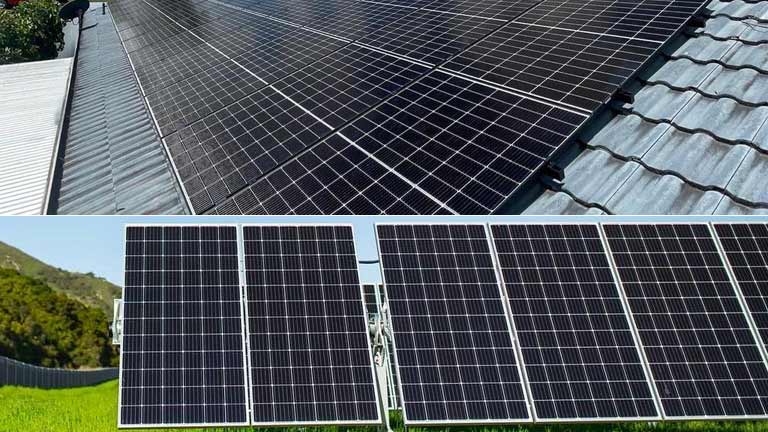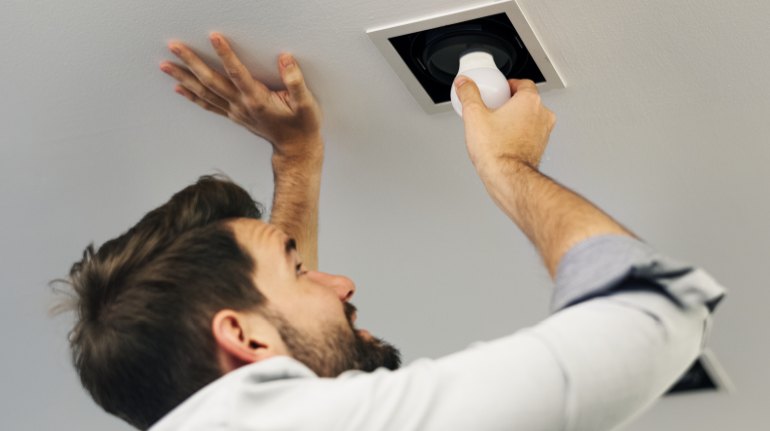
Imagine this: You’ve finally made the decision to embrace solar energy and are eager to transform your home or business into a renewable energy haven. But then, you’re faced with a critical question – should you opt for ground-mounted or roof-mounted solar systems? It’s a problem that has left many environmentally-conscious individuals scratching their heads.
But worry not because we’ve got your back! In this riveting article, we’ll delve into the nitty-gritty of solar panel installation of both options: their pros and cons, features, and more.
So, buckle up and join us on this enlightening journey as we shed light on the captivating world of solar installation!
Ground-Mounted Solar Panel Installation
Ground-mounted solar systems are good options for those with ample land space seeking a customisable solar energy solution. Let’s explore the various advantages and disadvantages of this type of installation, and determine whether it’s the right fit for your renewable energy needs.
Advantages:
- Flexibility in placement: One of the most significant benefits of installing ground-mounted solar panels is that there’s a lot of flexibility when positioning these panels. They can be easily placed in the optimal location for maximum sunlight exposure.
- Ease of maintenance: Ground-mounted solar panel installation offers enough accessibility. Hence, cleaning and maintaining the system is highly convenient.
- Expandability: Ground-mounted solar panel installation offers the possibility of expansion if needed. As energy needs grow, additional panels can be easily added to the existing setup, increasing power generation.
Disadvantages:
- Land usage: Ground-mounted solar systems require a dedicated area of land, which can be a drawback for homeowners with limited space or those who wish to preserve their landscaping.
- Cost: Ground-mounted solar installation often has a higher price. This is especially true when these panels are being installed with solar trackers. Since solar trackers are movable components, maintaining them is more expensive. However, the long-term benefits of increased efficiency may outweigh these expenses.
- Aesthetics: Some homeowners may find ground-mounted solar panel installation less visually appealing than installing roof-mounted systems. This subjective consideration may not be a concern for all individuals.
Roof-Mounted Solar Panel Installation:
A roof-mounted solar installation can be an attractive choice for those with limited land space or a desire to make the most of their property’s existing structures. Let’s dive into the pros and cons of this installation type to see if it aligns with your renewable energy goals and requirements.
Advantages:
- Space-saving: Roof-mounted systems utilise the existing roof space. It makes them an excellent option for homeowners with limited land areas. This space-saving benefit allows for more efficient use of the available property.
- Aesthetics: Many people prefer the look of roof-mounted solar panels as these panels blend seamlessly with the home’s existing structure. The low-profile appearance can also enhance the property’s curb appeal.
- Lower initial costs: Roof-mounted solar panel installation typically costs less than ground-mounted systems. This is because the existing roof structure serves as the mounting base, reducing the need for additional materials and labour.
Limitations:
- Roof condition: The condition of the roof plays a significant role in the feasibility of a roof-mounted solar system. Roofs that are old, damaged, or structurally unsound may require repairs or replacement before solar panels can be installed.
- Limited expandability: Roof-mounted systems are less scalable than ground-mounted systems because they need more space. Thus, homeowners who expect their future energy needs will increase substantially should be careful.
- Maintenance challenges: Roof-mounted solar panel installations can be more challenging to maintain due to their less accessible location. Regular cleaning and check-ups by professionals are mandatory.
Here is a graph to walk you through the differences between these two types of systems.
|
Category |
Ground-Mounted |
Roof-Mounted |
|
Flexibility in Placement |
High |
Limited |
|
Initial Costs |
High |
Low |
|
Aesthetics |
Subjective |
Widely preferred |
|
Land Usage |
Requires dedicated space |
Space-saving |
|
Scalability |
High |
Limited |
Conclusion:
In conclusion, both ground-mounted and roof-mounted solar panels have their own unique advantages and disadvantages. Ground-mounted systems offer flexibility in the placement, ease of maintenance, and expandability. But they require dedicated land space and may have higher initial costs.
On the other hand, roof-mounted systems save space, are generally considered more aesthetically pleasing, and have lower upfront costs. But they can be challenging to maintain as they offer limited accessibility.
Ultimately, the choice between installing ground-mounted and roof-mounted systems will depend on individual factors such as land availability, roof condition, future energy needs, and personal preferences.
By carefully weighing the pros and cons of each option, homeowners and businesses can make the best decision.
FAQs:
1. How do I decide between a ground-mounted and roof-mounted solar panel installation?
To decide between ground-mounted and roof-mounted installations, consider factors such as land availability, roof condition, future energy needs, and personal preferences. Weigh the advantages and disadvantages of each option to determine which is best suited to your specific situation.
2. Can I switch between ground-mounted and roof-mounted solar panel installations?
Switching between ground-mounted and roof-mounted installations is possible but costly and time-consuming. It’s essential to carefully consider your options before making a decision to ensure you’re satisfied with the long-term outcome.
3. How do I maintain a roof-mounted solar system?
Maintaining a roof-mounted system typically involves regular cleaning to remove dirt, debris, and snow and periodic inspections to ensure the panels and mounting structure are in good condition.
Professionals use long-handle brushes with soft bristles to clean the panels.




